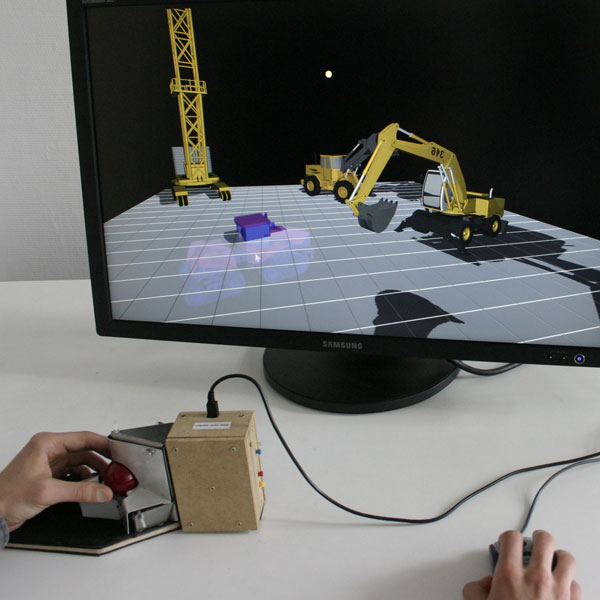The Influence of Input Device Characteristics on Spatial Perception in Desktop-Based 3D Applications
In desktop applications 3D input devices are mostly operated by the non-dominant hand to control 3D viewpoint navigation, while selection and geometry manipulations are handled by the dominant hand using the regular 2D mouse. This asymmetric bi-manual interface is an alternative to commonly used keyboard and mouse input, where the non-dominant hand assists the dominant hand with keystroke input to toggle modes. Our first study compared the keyboard and mouse interface to bi-manual interfaces using the 3D input devices SpaceTraveller and Globefish in a coarse spatial orientation task requiring egocentric and exocentric viewpoint navigation. The different interface configurations performed similarly with respect to task completion times, but the bi-manual techniques resulted in significantly less errors. This result is likely to be due to better workload balancing between the two hands allowing the user to focus on a single task for each hand. Our second study focused on a bi-manual 3D point selection task, which required the selection of small targets and good depth perception. The Globefish interface employing position control for rotations performed significantly better than the SpaceTraveller interface for this task.

Documents and Papers
Kulik, A., Hochstrate, J., Kunert, A., Froehlich, B.
The Influence of Input Device Characteristics on Spatial Perception in Desktop-Based 3D Applications
In Proceedings of the 2009 IEEE Symposium on 3D User Interfaces 2009 (3DUI), pp 59-66, 2009.
[preprint]
